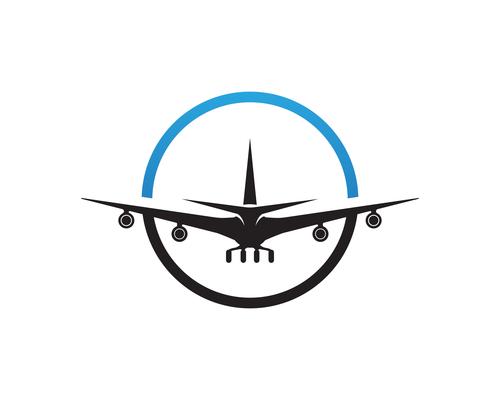As of Autumn 2024, Europe will introduce a significant change in how travelers enter and exit its borders. The new European Entry/Exit System (EES) is set to take effect on Sunday, November 10, 2024, though there’s a possibility of a one-week delay to November 17. If you’re planning a trip to Europe later this year, understanding how this new system impacts your travel plans is crucial.
What is the EES?
The European Entry/Exit System (EES) is a state-of-the-art border control mechanism designed to streamline and enhance the process of recording non-EU nationals’ movements in and out of the Schengen Area. This area includes 29 countries that allow passport-free travel among them. The EES replaces the traditional method of manual passport stamping with a more advanced approach that involves biometric data collection.

When you enter the Schengen Zone, you’ll need to provide not only your passport details but also biometric information such as fingerprints and a facial scan. This change is designed to make it easier for authorities to track when travelers arrive and how long they stay, ensuring compliance with the 90-day stay limit within a 180-day period.
How Will Your Data Be Collected?
The collection of your data will occur at self-service kiosks installed at major entry points like airports, ports, and train stations. At these kiosks, you’ll need to input your passport details and provide four fingerprints along with a facial scan. Once registered, your data will be stored and used for all future travels for the next three years, or until your passport expires.
For subsequent trips, the process will be faster. You’ll only need to have one biometric piece of data—either a fingerprint or facial scan—checked, making future border crossings more efficient.
Why Might There Be Delays?
Initial delays are possible as travelers adapt to the new system. Registering biometric data for the first time may take longer than the traditional passport stamping process. During busy periods, like holiday seasons, you might experience longer wait times. However, once your data is registered, you should find border control quicker and more efficient.
In France, where there is a reciprocal border control arrangement with the UK, border officers are already stationed at British entry points such as the Port of Dover and the Eurostar terminal in St Pancras. This arrangement means that controls will happen before you board your train or ferry, not after.
Benefits of the EES
The EES aims to offer several long-term benefits:
Efficiency:
The new system will streamline border control processes, making it faster for travelers who have already registered their data.
Enhanced Tracking:
.It will be easier for EU authorities to monitor and manage overstays, ensuring compliance with visa regulations.
Security:
By using biometric data, the EES will enhance security, aiding in the fight against terrorism and organized crime.
Better Oversight:
The EU describes the EES as a significant step toward more effective border management and improved tracking of who is entering and leaving the EU.
Implications for Your Journey
Planning ahead is essential, especially during peak travel times such as Christmas. Checking traffic updates and being aware of potential delays can help you better manage your travel time.
Initially, there may be a ‘soft launch’ phase of up to six months where manual passport stamping could still be used if there are significant delays. Additionally, an app will be introduced in the future to allow passengers to register some details in advance, though biometrics will still need to be done in person.

How Are Companies Preparing?
To accommodate the new EES, various travel companies are investing heavily in upgrades:
LeShuttle:
They are installing 224 self-registration kiosks in their Folkestone and Calais terminals, investing £67 million in the process. They anticipate adding an extra four to seven minutes to journey times and are currently testing the system with volunteers.
Port of Dover:
New facilities will include kiosks where coach passengers will register before boarding, and cars will register via tablets initially. Over time, car drivers will also be able to use kiosks.
HS1 (Eurostar):
At London St Pancras International, 49 kiosks are being installed, and the number of manual border control positions will double from nine to eighteen. They do not expect significant delays but acknowledge that first-time registrants might experience slightly longer processing times.
Airports and the EES
For airports, the EES process will be relatively straightforward. After landing in an EU country, you’ll need to register your details. This is expected to be less time-consuming than the current passport stamping process, which has led to long queues in the past.
Exemptions from the EES
Certain groups are exempt from the EES:
- EU and Irish Citizens: They do not need to register their biometric data.
- Long-Stay Visa Holders: Non-EU nationals who are legally residing or have long-stay visas are also exempt.
Being married to an EU national does not exempt you; registration is required regardless of marital status.
The European Travel Information and Authorisation System (ETIAS)
Alongside the EES, the European Travel Information and Authorisation System (ETIAS) will be introduced in mid-2025. This visa waiver system will affect UK nationals and other non-EU travelers who previously didn’t need a visa. The ETIAS will authorize travel for up to 90 days within a three-year period and will cost €7. It functions similarly to the US ESTA system, requiring a new application if you get a new passport.
Conclusion: The introduction of the European Entry/Exit System (EES) represents a significant shift in border control procedures across Europe. While initial delays and adjustments are expected, the long-term benefits include greater efficiency, enhanced security, and better management of travel compliance. Staying informed and prepared will help ensure a smoother transition to this new system for your European travels.

The information provided in this blog is based on current understanding and plans regarding the European Entry/Exit System (EES) and related travel regulations. Changes to the implementation date or procedures may occur. Travelers should consult official sources and stay updated with the latest information to ensure compliance with new regulations.
Source: www.saga.co.uk
Get Free Expert Advice: Are you ready to embark on your next adventure? Whether you’re seeking a work permit, tourist visa, or study opportunities in Canada or other countries, we’re here to help! Contact us today to learn how our expert services can simplify your journey and turn your dreams into reality. Reach out now and let’s start planning your future together!
- Top 5 Technology Courses to Pursue in the UK
- Essential Phrases for Tourists: Your Survival Guide in Europe
- Extend Your European Adventure: Top Non-Schengen Destinations You Must Visit
Also read:
- UK Study Visa Approved Without IELTS – Even After a 5-Year Study Gap!
- 10 Most Budget-Friendly Countries for Indian Students to Study Abroad
- Discover the Best Time to Visit Canada: A Complete Guide for Your Dream Adventure
- Navigating Post-Study Work Opportunities & Tuition Fees: A New Era for International Students in the UK, US, Canada, and Europe
- Exciting News: Malaysia Extends Visa-Free Entry for Indian Nationals Until 2026!
 Need expert Advise ?
Need expert Advise ?
